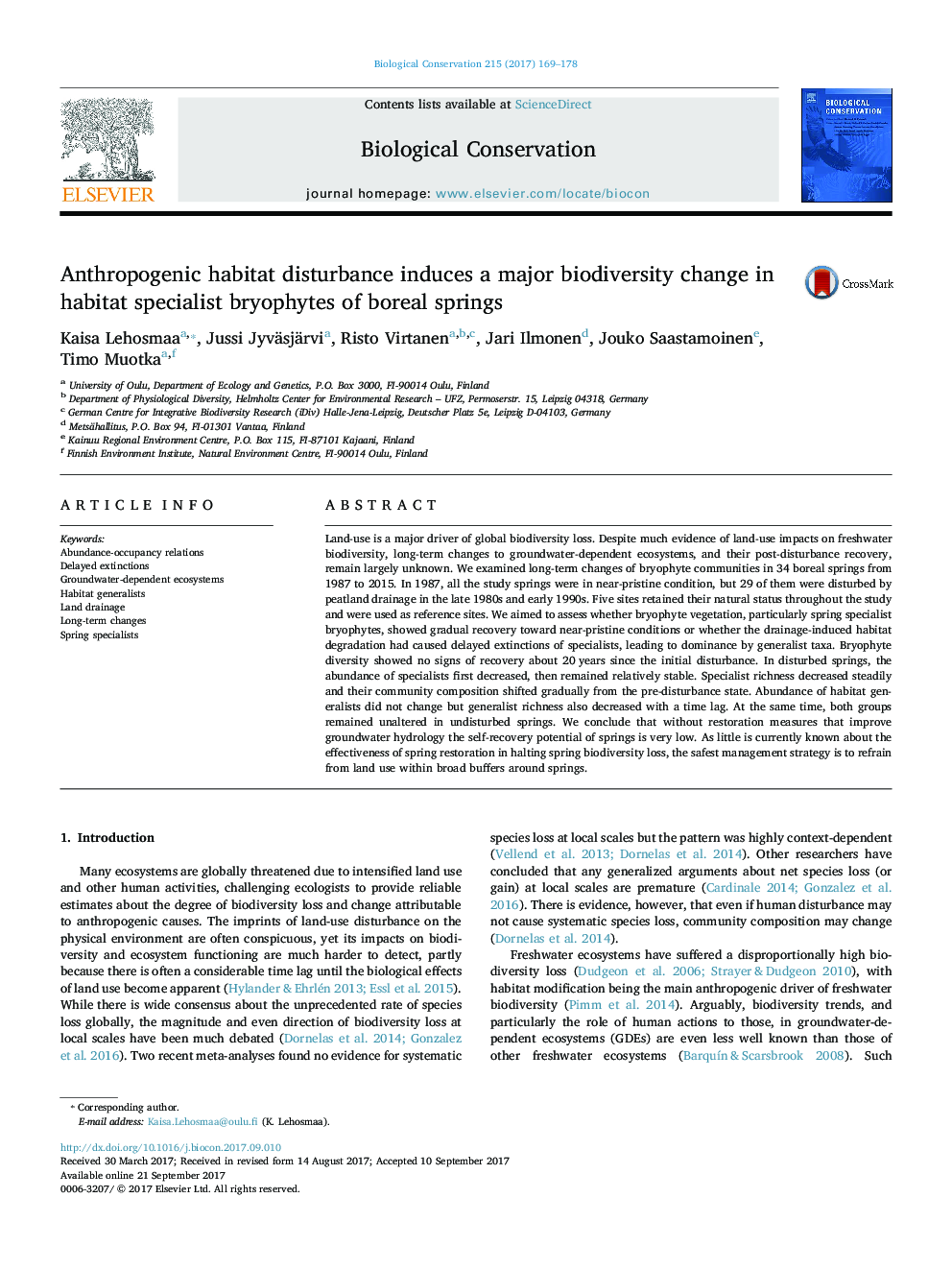| کد مقاله | کد نشریه | سال انتشار | مقاله انگلیسی | نسخه تمام متن |
|---|---|---|---|---|
| 5743030 | 1617890 | 2017 | 10 صفحه PDF | دانلود رایگان |
- Bryophyte diversity showed no sign of recovery 20Â years from the initial disturbance.
- Drainage caused a delayed decrease of bryophyte richness.
- Community composition of specialists shifted gradually from the reference state.
- Both specialist and generalist diversity remained unchanged in undisturbed springs.
- Measures that improve spring hydrology are needed to restore spring biodiversity.
Land-use is a major driver of global biodiversity loss. Despite much evidence of land-use impacts on freshwater biodiversity, long-term changes to groundwater-dependent ecosystems, and their post-disturbance recovery, remain largely unknown. We examined long-term changes of bryophyte communities in 34 boreal springs from 1987 to 2015. In 1987, all the study springs were in near-pristine condition, but 29 of them were disturbed by peatland drainage in the late 1980s and early 1990s. Five sites retained their natural status throughout the study and were used as reference sites. We aimed to assess whether bryophyte vegetation, particularly spring specialist bryophytes, showed gradual recovery toward near-pristine conditions or whether the drainage-induced habitat degradation had caused delayed extinctions of specialists, leading to dominance by generalist taxa. Bryophyte diversity showed no signs of recovery about 20Â years since the initial disturbance. In disturbed springs, the abundance of specialists first decreased, then remained relatively stable. Specialist richness decreased steadily and their community composition shifted gradually from the pre-disturbance state. Abundance of habitat generalists did not change but generalist richness also decreased with a time lag. At the same time, both groups remained unaltered in undisturbed springs. We conclude that without restoration measures that improve groundwater hydrology the self-recovery potential of springs is very low. As little is currently known about the effectiveness of spring restoration in halting spring biodiversity loss, the safest management strategy is to refrain from land use within broad buffers around springs.
Journal: Biological Conservation - Volume 215, November 2017, Pages 169-178
